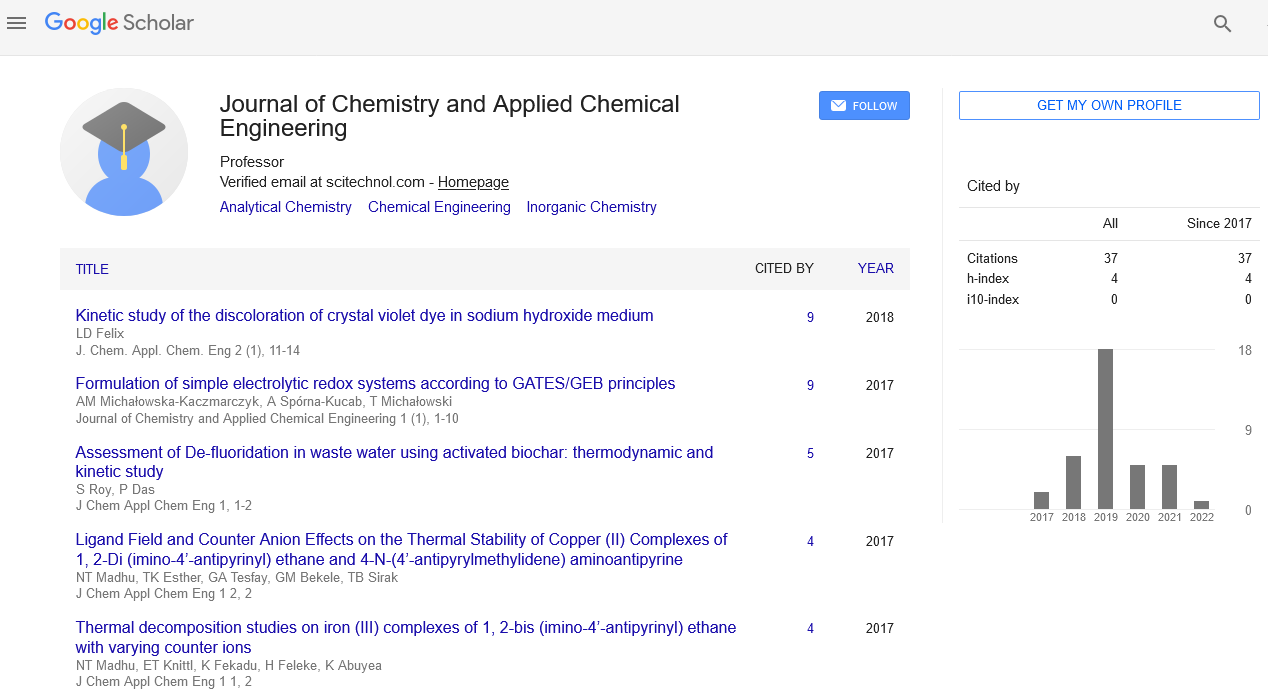Challenges and opportunities in multi-scale computational modeling of (photo-)electrocatalytic processes
Tadashi Ogitsu
Lawrence Livermore National Laboratory, USA
: J Chem Appl Chem Eng
Abstract
Renewable energy sources, such as solar and wind energies, are intermittent in nature and show large variation in its geographical distribution, leading to necessity of scalable energy storage and re-distribution solutions. Hydrogen and hydrogen rich organic species are good candidates for such energy carrier due to its abundance of constituent elements and their high energy densities that stems from the low atomic weight of hydrogen. While methodologies for synthesizing such energy carriers already exist, further improvements are necessary for accelerating mass deployment of renewable energy.
In this talk, we will overview multi-scale aspect of (photo-)electrocatalytic processes commonly seen in water electrolysis, CO2 reduction, ammonia synthesis, and discuss about a few important concepts, time scale of individual processes, scaling relation in microscopic electrocatalytic processes and macroscopic bifurcation behavior, which are intimately connected each other. We will then discuss about the ab-initio based computational methods that can be used to obtain fundamental information such as reaction free energy profile of electrocatalytic process under realistic condition (pH, potential, ion type) with various degree of approximations. Gaining deep insights into such factors will facilitate development of the method to modulate energetics and kinetics of individual electrochemical process, and help overcoming the scaling relation that poses challenges in optimizing multi-step catalytic process and/or product selectivity. We note that such ab-initio based approach provide a way to calculate spectroscopic signature of the model system, which will enable us to validate the computational model by comparing with operando spectroscopy data.
This work was performed under the auspices of the U.S. Department of Energy under contract No. DE-AC52-07NA27344, and supported by DOE Fuel Cell Technology Office under H2@Scale program.
Recent Publications
1. Pham T, Zhang X, Wood B, Prendergast D Ptasinska S, Ogitsu T (2018) Integrating ab initio simulations and X-ray photoelectron spectroscopy: toward a realistic description of oxidized solid/liquid interfaces, J. Phys Chem. Lett. 9, 194-203.
2. Pham T, Mortuza G, Wood B, Lau E, Ogitsu T, Buchsbaum S. Siwy Z, Fornasiero F, Schwegler E, (2016) Salt solutions in carbon nanotubes: the role of cation−π interactions, J. Phys. Chem. C 120, 7332-7338.
3. Esposito D, Daxter J, John J, Lewis N. Moffat T. Ogitsu T, O’Neil G, Pham T, Talin A, Velazquez J, Wood B (2015) Methods for photoelectrode characterization with high spatial and temporal resolution, Energy Environmental Science 8, 2863-2885.
4. Wood B, Schwegler E, Choi W, Ogitsu T (2013) Hydrogen-bond dynamics of water at the interface with InP/ GaP(001) and the implications for photoelectrochemistry, J. Am. Chem. Soc. 135, 15774-15783.
5. Choi W, Wood B, Schwegler E, Ogitsu T (2013) Site-dependent free energy barrier for proton reduction on MoS2 Edges, J. Phys. Chem. C 117, 21772-21777.
Biography
Tadashi Ogitsu has his expertise in ab-initio simulations and computational spectroscopy and is interested in applying these skills and investigate on fundamental aspect of electrochemical processes relevant for energy applications such as renewable hydrogen production. He is a deputy group leader of Quantum Simulation Group at Lawrence Livermore National Laboratory and is the point of contact for DOE/EERE HydroGEN consortium (www.h2awsm.org), which is designed to facilitate sustainable hydrogen production R&D by providing highly diverse and complemental research capabilities.
 Spanish
Spanish  Chinese
Chinese  Russian
Russian  German
German  French
French  Japanese
Japanese  Portuguese
Portuguese  Hindi
Hindi 